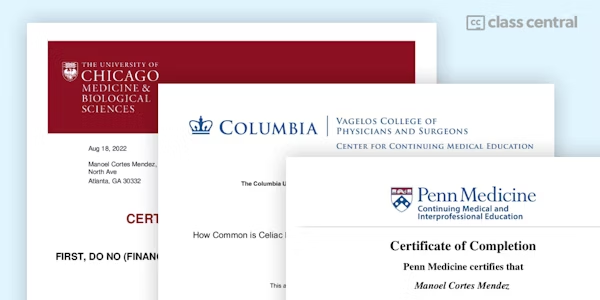Mobile Healthcare technologies for patients and providers
Georgia Institute of Technology via Coursera
This course may be unavailable.
Overview
Syllabus
This course intends to provide senior undergraduate and entry-level graduate students an introduction to Biomedical and Health Informatics (BHI) that covers: (1) informatics needs driven by Big Data generated from current biomedicine and health care (e.g., cancer, cardiovascular disease, aging population, etc.); (2) informatics challenges and common methodologies; and (3) progress made in BHI and opportunities.
Health monitoring involves sensing, personal health records, and clinical decision making. The typical clinical process includes disease screening/diagnosis, treatment, and prognosis. Using examples from chronic condition monitoring and clinical care, this course reviews the typical flow of clinical information, which includes the following steps: (1) data acquisition, storage, and curation; (2) data analysis, mining, and visualization; (3) modeling; (4) decision support; and (5) delivery (point-of-care access). Various introductory topics in bioinformatics, imaging informatics, and health informatics are organized as below:
- Review of Basic Knowledge in Biostatistics, Machine Learning and Data Mining, Visualization, and Decision Support
- High-Throughput –omic Informatics and Next-Generation Sequencing (NGS)
- Molecular and Cellular Imaging Informatics for Next-Generation Pathology (NGP)
- Mobile Health and Health Informatics
- Modeling for Systems Biology and Medicine
Taught by
May Wang





